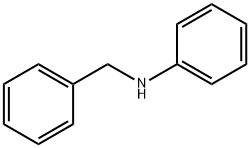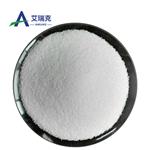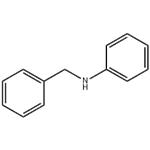Synthesis
N-Phenylbenzylamine can be obtained by condensation of benzyl chloride and aniline. Mix and stir sodium bicarbonate, water and aniline, heat to 90-95°C, and slowly add benzyl chloride. React at 90-95°C for 3h. Cool and filter. The filtrate was separated, and the organic layer was washed with saturated brine and dried over anhydrous sodium sulfate. Then, under reduced pressure distillation, the 81°C (1.6kPa) fraction was collected to recover aniline, and the 170-190°C (1.6kPa) fraction was cooled and solidified to give N-Phenylbenzylamine.
Chemical Properties
colorless to yellow-beige crystalline powder
Uses
N-Benzylaniline is a major metabolite of the antihistaminic Antazoline and other N-substituted benzylanilines.
Uses
N-Benzylaniline was used in the separation of tervalent gallium, indium and thallium by solvent extraction method.
Synthesis Reference(s)
Chemistry Letters, 8, p. 45, 1979
Organic Syntheses, Coll. Vol. 1, p. 102, 1941
Tetrahedron Letters, 19, p. 4987, 1978
DOI: 10.1016/S0040-4039(01)85789-0
General Description
The electropolymerisation of
N-benzylaniline at transparent Indium Tin Oxide glass electrodes has been investigated by UV-visible spectroelectrochemistry.
N-Benzylaniline on electrochemical oxidation in aqueous sulfuric acid solution produces an adherent conducting polymer film at the platinum electrode.
Purification Methods
Crystallise the amine from pet ether (b 60-80o) (ca 0.5mL/g). The picrate has m 113o (from Et2O). [Beilstein 12 H 1023, 12 I 449, 12 II 548, 12 III 2215, 12 IV 2172.]




